Product information Shizuoka Sencha
Overview:
Sencha (煎茶) is steamed green tea. Usually lightly-steamed and medium-steamed green tea are called sencha, and deep-steamed tea is called fukamushicha in Japan.
The sencha which CHAMART introduces is medium-steamed green tea. The used tea leaves are soft and it can be used for cooking.
The sencha is single origin and certified as Organic JAS. The sencha is produced in Shizuoka City, Shizuoka Prefecture. Shizuoka is famous for green tea.
This sencha is eco-friendly tea.
CHAMART introduces 4 grades of sencha.
SL1 is the first grade and the variety is Yabukita. Tea leaves plucked in spring are used.

Sencha JSL1
SL2 is the second grade and the variety is Yabukita. Tea leaves plucked in spring are used.
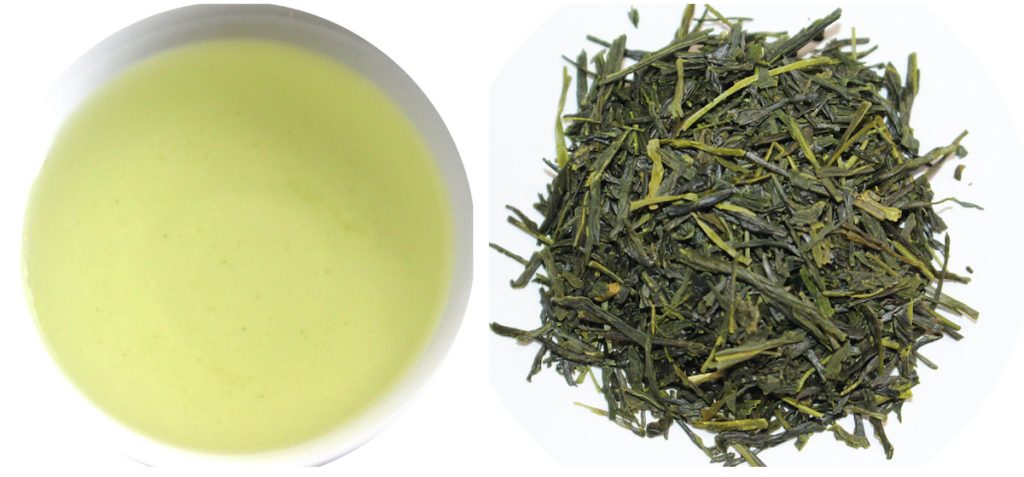
Sencha JSL2
SL3 is the third grade and the variety is Yabukita. Tea leaves plucked in spring are used.
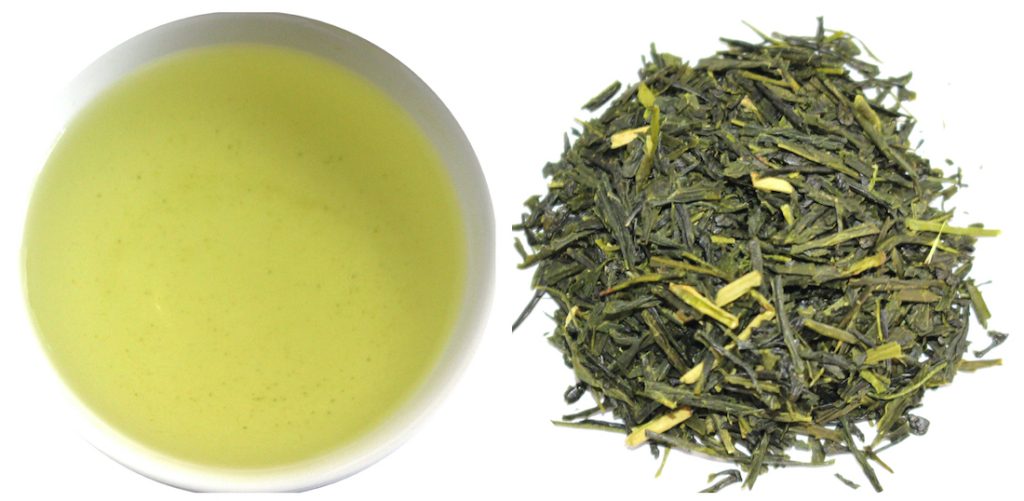
Sencha JSL3
SL4 is the 4th grade and the variety is Yabukita. Tea leaves plucked in spring are used.
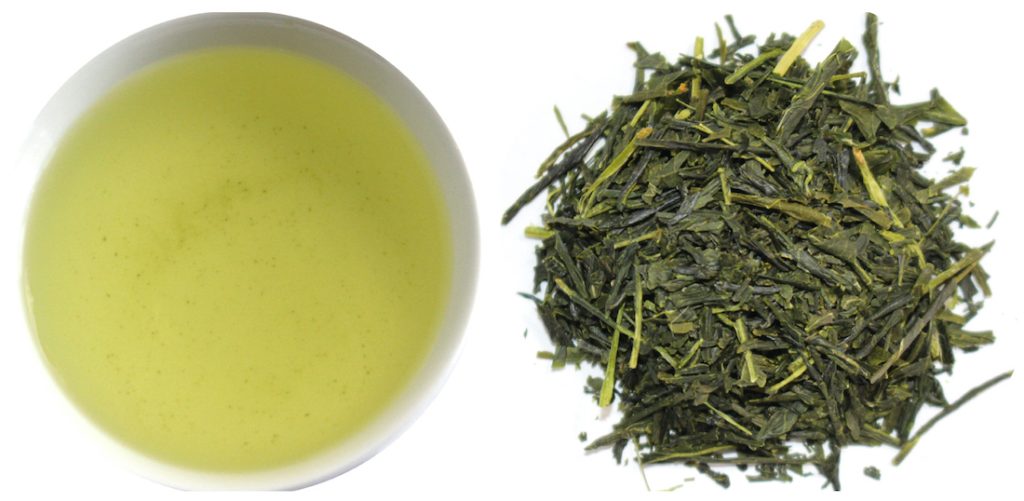
Sencha JSL4
Green tea
Type of tea: Sencha (medium-steamed green tea)
Production place: Shizuoka City, Shizuoka Prefecture, Japan
Leaf: thin and long, like needles
Time of steaming tea leaves: about 40 seconds
Color of brewed tea: Clear, pale yellow
Flavor: Fresh and sharp taste with a slight bitterness (mild bitter)
Best-before date: 1 year after the shipping date or 2 years after the shipping date if stored under 9 ℃ in the refrigerator
Other:
Organic farming (certified Organic JAS) *: ◯
Certification body: Organic Farming Promotion Association (OFPA)
Price: Please contact us
Minimum Order Quantity (MOQ): 20kg (10kg x 2 packages in 1 box)
Net weight: 20kg (10kg/2 package)
Gross weight: 22kg in 1 box
Cardboard box size: 480mm × 340mm × 400mm (2kg)
Inner package: Aluminum-metallized film kraft bag
Outer box: Cardboard box
*10kg in a cardboard box (size: 393mm × 270mm × 330mm, 1kg) x 2 boxes are also available.
Storage condition: Store in a cool, dark and dry place. Avoid storing in places with high temperatures and humidity, and keep out of direct sunlight and light.
CHAGUSABA farming method *: △
The tea is cultivated using the CHAGUSABA farming method in Shizuoka City. However, Shizuoka City is not the area certified as a Globally Important Agricultural Heritage System (GIAHS) by the Food and Agriculture Organization of the United Nations (FAO) in 2013. In addition, the amount of CHAGUSA (grass) for tea fields is small.
*The CHAGUSABA farming method is NOT an organic farming method.
Please click here for the details of 1, 2 and 3.
1. Organic JAS (Japanese Agricultural Standard)
2. EU Maximum Residue Level (MRL) of Pesticide
3. Examination of Radioactive materials in tea cultivated in Shizuoka Prefecture
Variety: Yabukita
Yabukita is the most popular variety of tea plant in Japan. Yabukita is a well-balanced variety, with a high yield and has a strong umami flavor. Yabukita is suitable for any kind of green tea.

Tea garden in April 2021
Factory processing:
Cooling organic fresh tea leaves in a container → Steaming fresh leaves at around 100℃ by machine (蒸熱 Jonetsu) → Scattering and drying of tea leaves (葉打ち Hauchi) → Primary rolling and drying of tea leaves by machine (粗揉 soju) → Rolling tea leaves by machine (揉捻 Junen) → Secondary rolling and drying of tea leaves (中揉 chujo) → Final rolling of tea leaves by machine (精揉 seiju) → Drying tea leaves by machine (乾燥) → Sieving tea leaves by machine (篩い分け Furuiwake) → Storing tea leaves in the refrigerator → Firing and refining tea leaves by machine (火入れ hiire) → Inspecting, measuring, packing and shipping
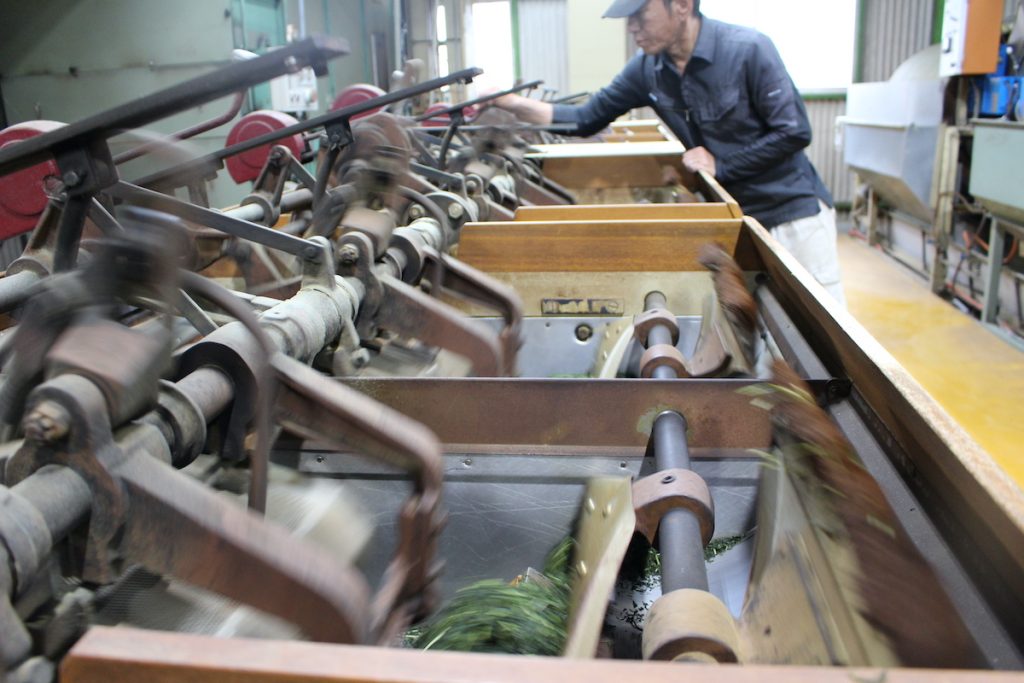
Tea processing in May 2021
Producers of tea:
A family-run tea garden that manages the production of tea from cultivation through processing.
The family cultivates tea upstream. There are clear streams and rivers, and fog is generated often in the region. The temperature difference between day and night is extreme. This contributes to producing a good tea.
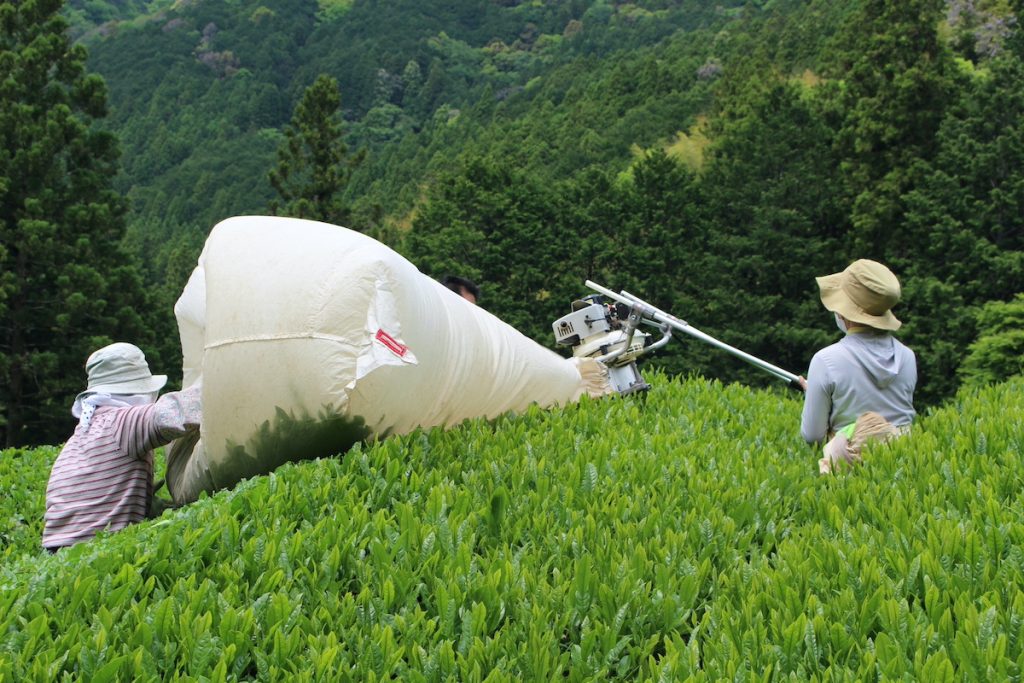
Plucking tea leaves in May 2021
Spring water comes out from the mountain at the location. Their philosophy is “Don’t pollute water, conserve the mountains” and it is a responsibility as a farmer who cultivates tea upstream.
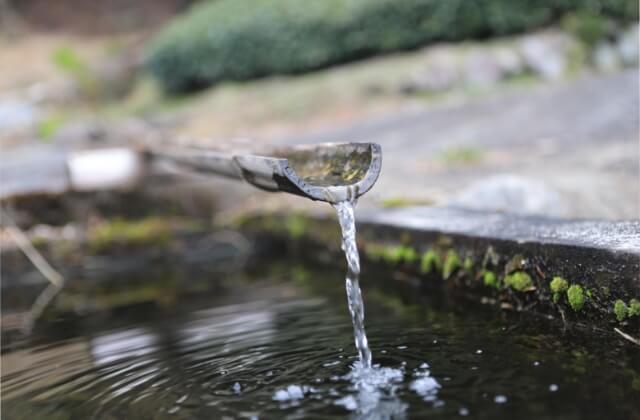
The spring water near the tea garden in February 2020
Production place: Shizuoka City, Shizuoka, Japan
Shizuoka Prefecture is a representative tea production area of Japan, located in the center of the main island of Japan. Shizuoka Prefecture has a warm climate with many rivers and is often foggy. These conditions are suitable for tea cultivation. Shizuoka City is one of the major tea production cities in Shizuoka Prefecture.
There are many facilities related to tea such as tea museums, a hotel with a tea theme, etc. in Shizuoka Prefecture.

How to use Sencha:
There are various ways of enjoying Sencha.
Sencha is good to drink as it can also be enjoyed with dried fruit or mint leaves added too.
Moreover, the used tea leaves of sencha can be used for cooking with eggs, cheese, pasta, etc.
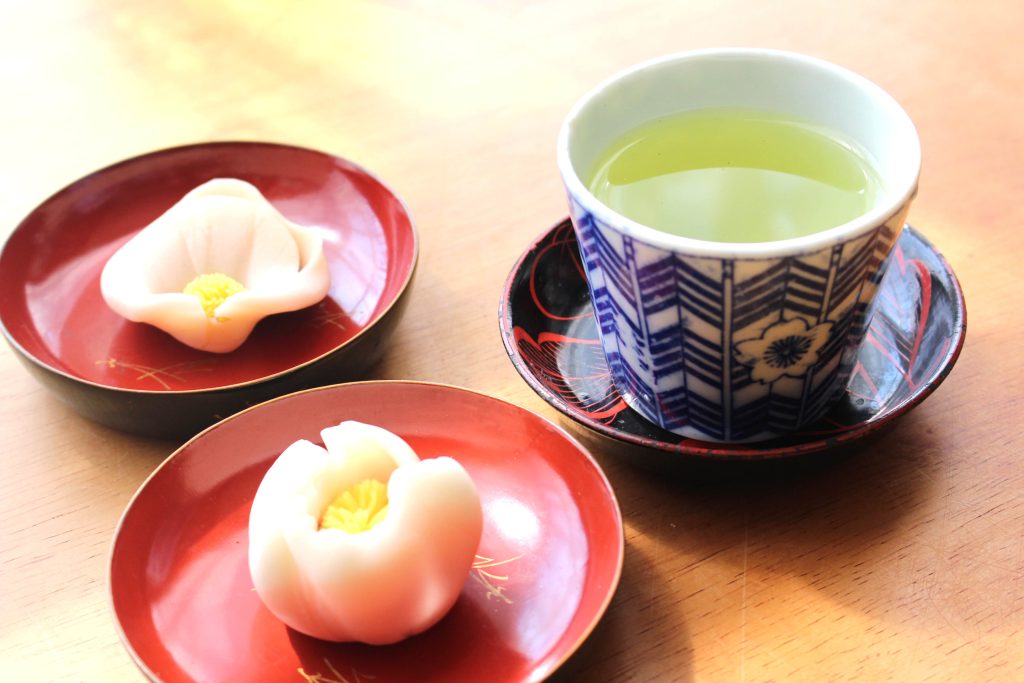
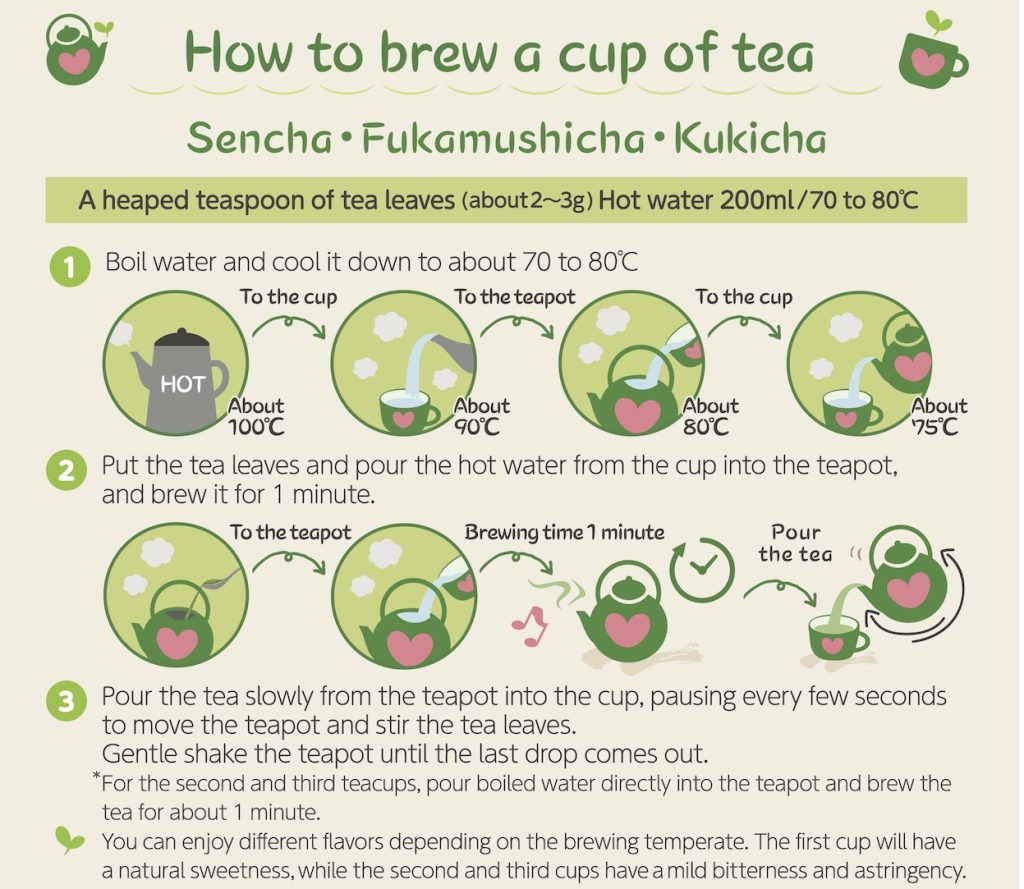
Shizuoka’s Chagusaba farming method (Traditional Tea-grass Integrated System in Shizuoka)
静冈的茶草场农耕法/靜岡的茶草場耕法
The Chagusaba farming method is a farming method traditionally practiced in Shizuoka Prefecture using grass mulch. It is an example of circular agriculture that harmonizes humans’ relationship with nature to preserve the environment and protect biodiversity.
Shizuoka’s Chagusaba farming method, which is conducted in 4 cities and 1 town including Kakegawa City, has been recognized as a Globally Important Agricultural Heritage System (GIAHS) by the Food and Agriculture Organization of the United Nations (FAO) in 2013.*
Cha (茶) means tea, Gusa/Kusa (草) means grass, and Ba (場) means place. Chagusaba (茶草場) refers to the semi-natural grasslands around tea fields. The Chagusaba farming method makes use of natural resources by cutting pampas or bamboo grasses that grow around the tea fields and laying them in the furrows between the tea fields. These grasses used in the tea fields are called Chagusa (茶草).
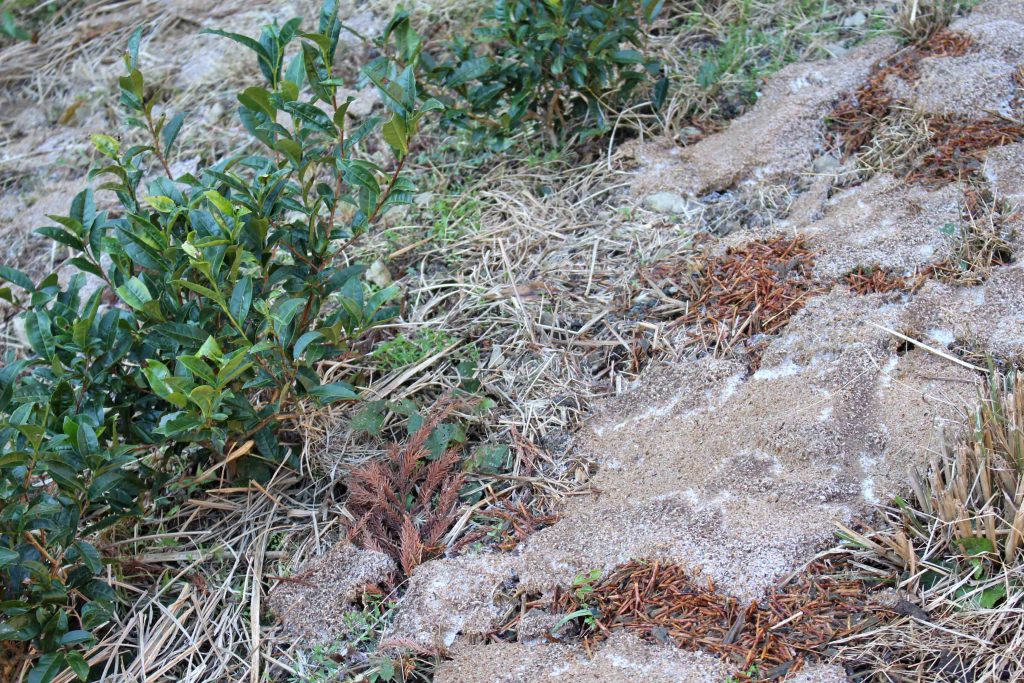
Young tea plants with Chagusa in December 2021
For more information on the Chagusaba farming method, please see the link below.
https://chamart.jp/en/archives/learn_heritage/shizuoka_chagusaba/
FAO, GIAHS Globally Important Agricultural Heritage System, Traditional Tea-grass Integrated System in Shizuoka
https://www.fao.org/giahs/giahsaroundtheworld/designated-sites/asia-and-the-pacific/traditional-tea-grass-integrated-system-in-shizuoka/en/
*Globally Important Agricultural Heritage Systems (GIAHS)
全球重要农业文化遗产/全球重要農業文化遺產
Systèmes Ingénieux du Patrimoine Agricole Mondial (SIPAM)
GIAHS are traditional agroecosystems made up of communities that have lived in an intricate relationship with their territory across generations while adapting to changes in society and the environment. They are recognized by the Food and Agriculture Organization of the United Nations (FAO). Additionally, the systems are resilient, characterized by remarkable agrobiodiversity, traditional knowledge, invaluable cultures and landscapes, sustainably managed by farmers, herders, fisherfolk, and forest people in ways that contribute to their livelihoods and food security.
FAO has designated a GIAHS related to tea in 3 sites in China, 1 site in Japan and 1 site in South Korea.
*Tea leaves contain caffeine. The diuretic, stimulant and anticancer effects of caffeine intake are clinically recognized. On the other hand, excessive intake of caffeine may have a damaging effect on health. Especially, pregnant or breastfeeding women, and children should be careful with the amount of caffeine they intake.
Reference:
The Food and Agriculture Organization (FAO), GIAHS Globally Important Agricultural Heritage System
http://www.fao.org/giahs/en/
联合国粮食及农业组织 全球重要农业文化遗产
https://www.fao.org/giahs/zh/
Systèmes Ingénieux du Patrimoine Agricole Mondial (SIPAM)
https://www.fao.org/giahs/fr/
FAO, GIAHS Globally Important Agricultural Heritage System, Traditional Tea-grass Integrated System in Shizuoka
https://www.fao.org/giahs/giahsaroundtheworld/designated-sites/asia-and-the-pacific/traditional-tea-grass-integrated-system-in-shizuoka/en/
Chagusaba in Shizuoka
http://www.chagusaba.jp/english/index.html
文部科学省
Ministry of Education, Culture, Sports, Science and Technology.
日本食品標準成分表2020年版(八訂)全体版
https://www.mext.go.jp/a_menu/syokuhinseibun/mext_01110.html
公益社団法人静岡県茶業会議所 (2019) 新版 茶の品種




